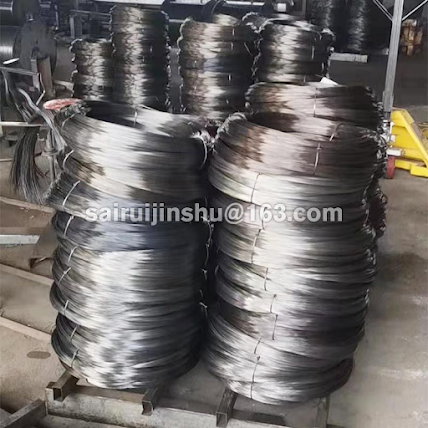A Guide to Annealed Wire
Wire is used throughout industry for a wide range of applications, from binding and securing small products together to providing the framework and support for large-scale structures. Manufacturers accommodate all of these applications by creating wire with different shapes, sizes, flexibilities, and formulations to suit various requirements and restrictions. One of the most commonly available types of wire is annealed wire.
Annealed wire—also referred to as annealed tie wire—is low-carbon steel wire that has been annealed to increase its ductility and decrease its hardness. These qualities result in higher flexibility without the loss of durability, which, combined, allow the wire to demonstrate self-tying and self-locking capabilities. It is available in several variations, each of which offers unique characteristics that make it suitable for different use cases.
In the following article, we provide a comprehensive overview of annealed wire, including what it is, how it’s made, the types available, and typical industrial applications.
What Is Annealed Wire?
As indicated above, annealed wire is low-carbon steel wire that has undergone the annealing process. The resulting product is soft and durable, qualities that allow it to remain intact when used in one of its most common applications—i.e., tying around itself or another product. For this reason, it is also sometimes called annealed tie wire.
How Is Annealed Wire Made?
Annealing is a heat treatment process that involves heating a material above its recrystallization temperature and cooling it back to room temperature. The cooling stage for ferrous materials (e.g., steel) is more gradual than that of non-ferrous materials (e.g., brass and copper) to prevent the metal from cracking or becoming brittle.
Many metalworking processes increase the hardness of material, which can make it harder to complete subsequent manufacturing operations. Annealing increases the ductility and decreases the hardness of the material, resulting in better formability and machinability. These qualities are essential for many wire applications.click here
The manufacturing process for annealed wire is as follows:
Forming the wire from steel (typically low-carbon steel)
Heating the wire to above the base material’s crystallization point but below its melting point
Gradually cooling the heated material to below its crystallization point
Applying oil to prevent rusting and facilitate dispensing through machinery (for black annealed wire)
The Annealing Process at Coastal Wire
At Coastal Wire, we use bell annealing furnaces to achieve a full annealing process that yields a consistent finish with no weak spots. Rather than relying on open-air heating or rapid cooling—both of which can introduce variation into the final wire product—we work with top-of-the-line equipment and thoroughly regulated production methods. Other annealing processes like strand annealing—sometimes used to save money—can’t compete with the thoroughness and quality of full annealing.
Types of Annealed Wires
Annealed wires are available in several variations, depending on the techniques employed during their manufacture. The types available include:
Black annealed wire. Black annealed wire gets its name from its distinctive black color, which comes from the addition of an anti-corrosive surface coating after the annealing process. It is used in a wide range of industrial and consumer applications, including baling, and handcrafting.
Bright wire. Bright annealed wire exhibits a bright and smooth finish. It is generally employed in binding and tying applications.
In addition to being available in black and bright variations, annealed wire comes in several gauges (i.e., wire diameters), forms (e.g., straight cut, loop, coiled, and U-type) and packaging options (e.g., merchant wire, box wire, and tie wire).
Merchant wire: several large coils of annealed wire wound onto a stand
Box wire: smaller and tighter coils of annealed wire weight individually packed into boxes
Tie wire: annealed wire (packaged as merchant wire or box wire) intended for use in tying applications

评论
发表评论